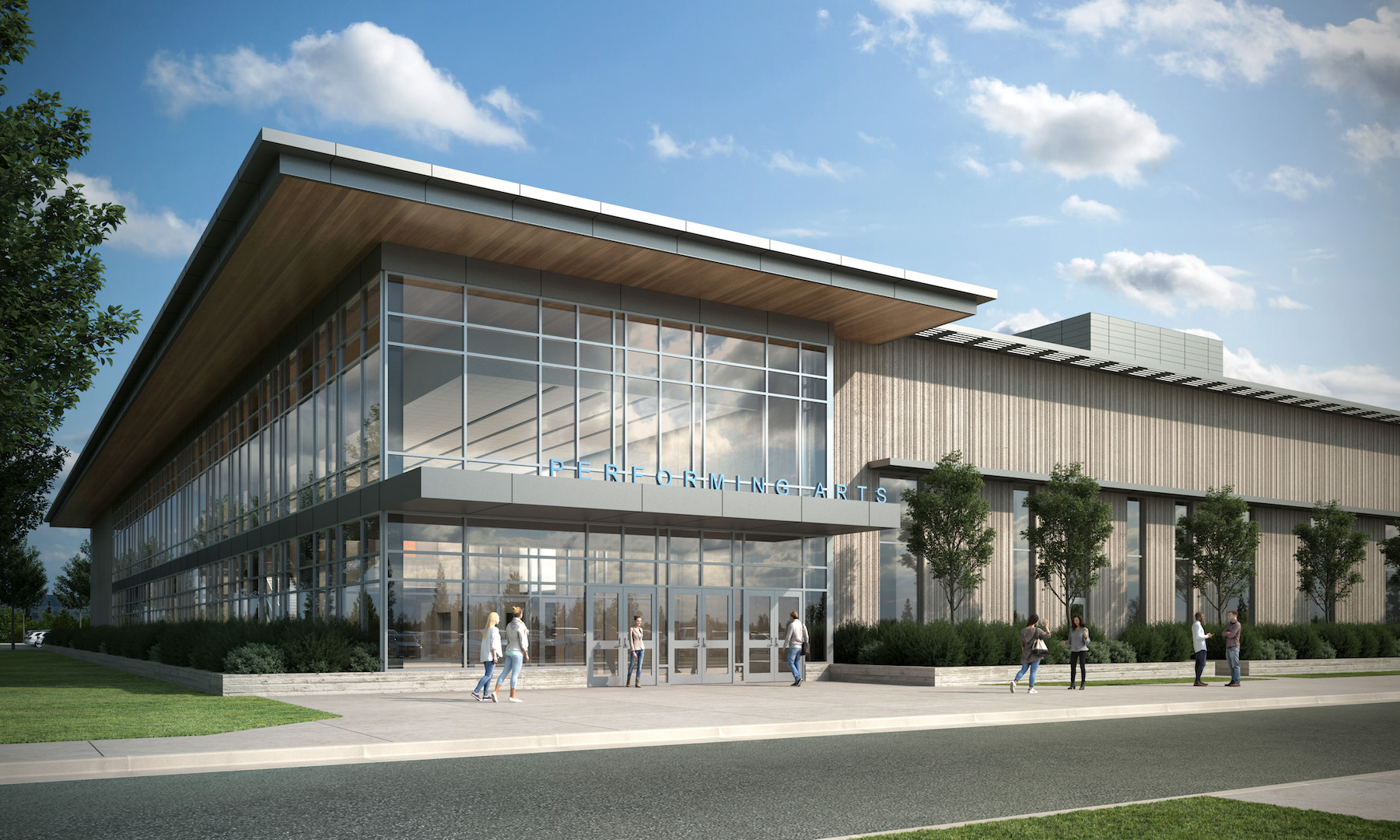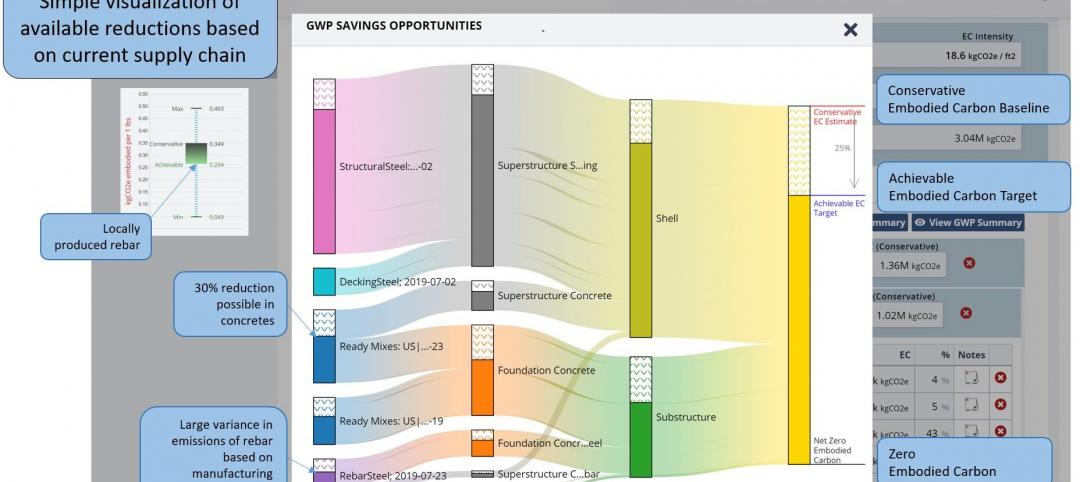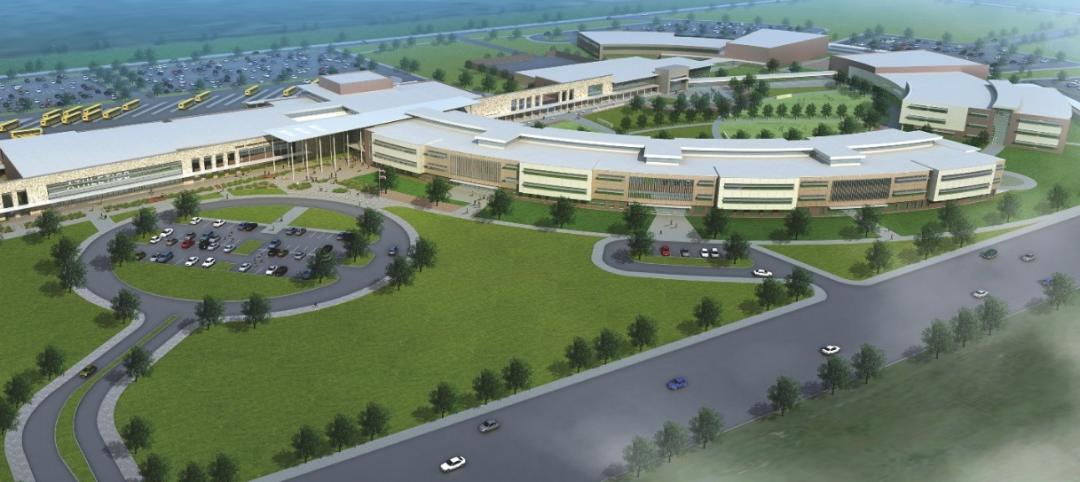Granite School District in Utah’s Salt Lake Valley has more than 60,000 students, making it one of the nation’s largest. In 2017, the District approved a $238 million bond that would fund the construction and renovation of 31 schools over a 10-year period.
Skyline High School and Cyprus High School were among those that would be replaced with modern buildings. Just how modern, though, was a point of debate between the District and the two firms hired to design the new construction, according to the lead architect on these projects.
First, some history about Skyline High School, located in Millcreek, Utah: Its current building opened in 1962, and it serves 2,156 students. That original is being replaced by a 427,000-sf school whose capacity will be between 2,200 and 2,300 students. It will have 51 classrooms, 13 labs, 11 specialized labs, abundant collaborative spaces, and six special-education resource teams. So far, the new campus’ pool, gym, and sports fields are completed. The academic building will be move-in ready this summer, at which point demolition on the old school will commence. After that, the new school’s auditorium and fine-arts center will be built, along with bus routes and parking areas. The whole project is scheduled for completion by December 2026.
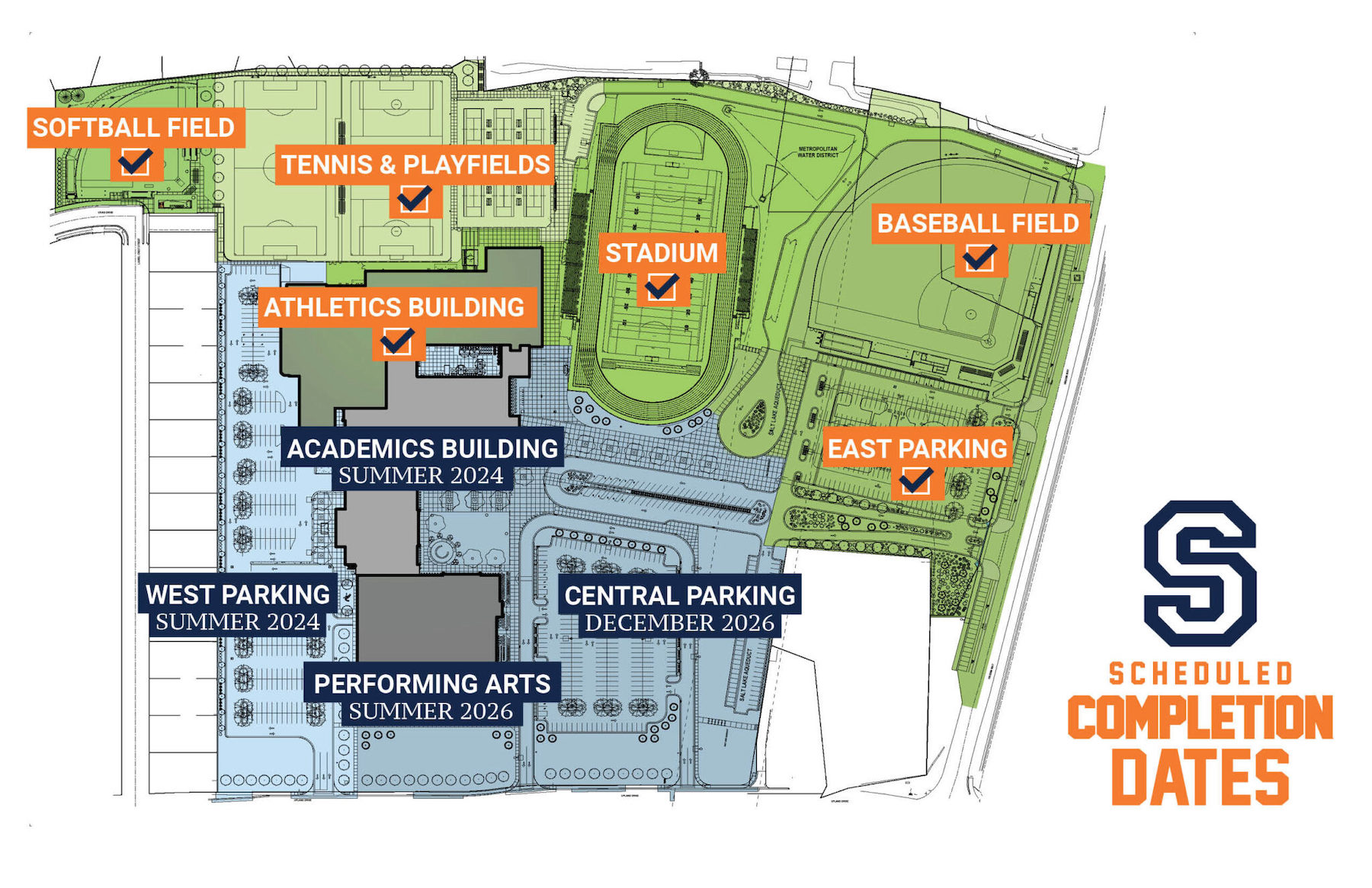
Back to the drawing board
Granite School District hired Fanning Howey to design the new Skyline High School in August 2017. Michael Hall, the firm’s Senior Project Executive and Education Planner, says that the District insisted, for accountability reasons, that Fanning Howey and Naylor Wentworth Lund, another design firm hired for this project, work under a joint venture agreement. (The joint venture is called Elevate.)
But when the firms presented their renderings, the District “reacted negatively,” recalls Hall. He believes that the community thought the design––which emphasized glass exterior walls throughout––strayed too far from a nostalgic ideal. “It wasn’t what they remembered the school had been,” he says. So the two firms restarted from scratch in 2019, and while glass is still prominent in the revised renderings’ interior and exterior design, “it wasn’t the vision we started with.”
Hall, who is based in Ohio, says he does a Zoom call every two weeks with his team, “and the first thing I ask is ‘is everyone happy?’”
Ironically, the District and community signed off on the design team’s renderings for the new 508,000-sf Cyprus High School, located in Magna, Utah, without much pushback. The Cyprus project is scheduled for completion in 2025.
Embracing space flexibility
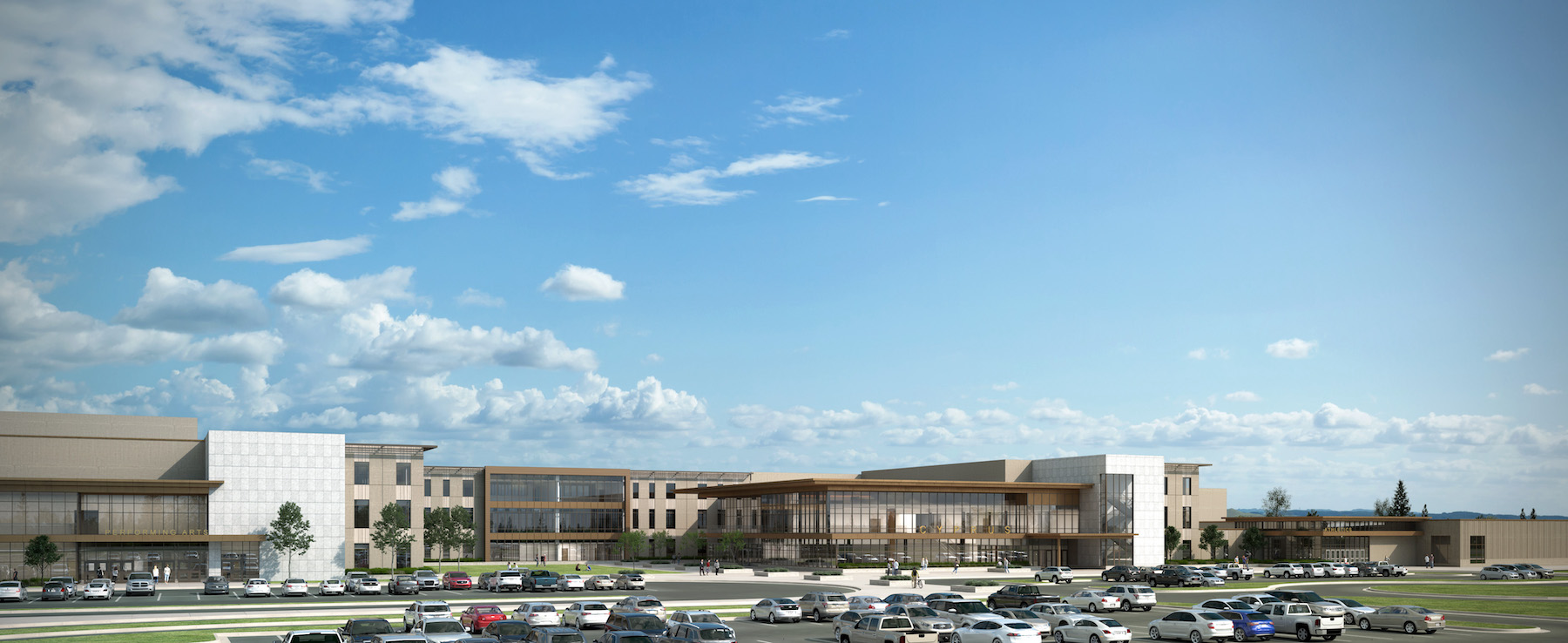
The $168 million Cyprus project, built on what had been an empty field with a 40- to 50-ft slope, required $4 million in soil compaction to support the new construction. The $174 million Skyline campus is more tightly configured, says Hall.
Another difference is how each project is being delivered. The old schools have been kept open during construction. Hughes General Contractors is building Skyline as its Construction Manager, whereas Westland Construction is building Cyprus as a General Contractor. To keep the design team in the loop, Westland has been sending Hall drone imagery of Cyprus’ progress every Monday, which prompted Hughes to send drone pictures of Skyline regularly, too.
What binds these two projects is their embrace of collaboration and design flexibility. At a time when some school districts and developers “still want egg crates” for classroom design, Hall lauds the Granite School District for devoting up to 900 sf for each of the numerous collaborative spaces included in Skyline and Cyprus. Glass walls that surround these spaces not only let more natural light into the adjacent classrooms, but provide safety and security with “adult visual control” of each room.
Skyline’s athletic buildings, which were completed in 2021, at the height of the COVID pandemic, include disinfecting lighting whose luminaires with 405-mm technology kill harmful airborne viruses and bacteria automatically and continuously.
Despite some of the anomalies and challenges these projects presented, Hall says he’s “excited” about how the schools will look. For Hall, who has been semiretired since 2018, Skyline and Cyprus will also be his “swan songs. When these are done, I’m done.”
Related Stories
University Buildings | Jul 28, 2015
OMA designs terraced sports center for UK's Brighton College
Designs for what will be the biggest construction project in the school’s 170-year history feature a rectangular building at the edge of the school’s playing field. A running track is planned for the building’s roof, while sports facilities will be kept underneath.
University Buildings | Jul 21, 2015
Maker spaces: Designing places to test, break, and rebuild
Gensler's Kenneth Fisher and Keller Roughton highlight recent maker space projects at MIT and the University of Nebraska that provide just the right mix of equipment, tools, spaces, and disciplines to spark innovation.
Codes and Standards | Jun 18, 2015
New document addresses school safety and security
In an effort to balance security and fire safety features within codes, standards and planning, NFPA hosted a two-day workshop, “School Safety, Codes and Security”, last December. The findings are now available in an NFPA report.
K-12 Schools | Mar 2, 2015
BD+C special report: What it takes to build 21st-century schools
How the latest design, construction, and teaching concepts are being implemented in the next generation of America’s schools.
Codes and Standards | Mar 2, 2015
Nevada moves to suspend prevailing wage rules on school projects
The Nevada Senate approved a bill that would suspend prevailing wage rules on school projects.
K-12 Schools | Mar 1, 2015
Are energy management systems too complex for school facility staffs?
When school districts demand the latest and greatest, they need to think about how those choices will impact the district’s facilities employees.
K-12 Schools | Feb 26, 2015
Should your next school project include a safe room?
Many school districts continue to resist mandating the inclusion of safe rooms or storm shelters in new and existing buildings. But that may be changing.
K-12 Schools | Feb 26, 2015
Construction funding still scarce for many school districts
Many districts are struggling to have new construction and renovation keep pace with student population growth.
K-12 Schools | Feb 26, 2015
D.C.'s Dunbar High School is world's highest-scoring LEED school, earns 91% of base credits
The 280,000-sf school achieved 91 points, out of 100 base points possible for LEED, making it the highest-scoring school in the world certified under USGBC’s LEED for Schools-New Construction system.
K-12 Schools | Feb 25, 2015
Polish architect designs modular ‘kids city’ kindergarten using shipping container frames
Forget the retrofit of a shipping container into a building for one moment. Designboom showcases the plans of Polish architect Adam Wiercinski to use just the recycled frames of containers to construct a “kids city.”


